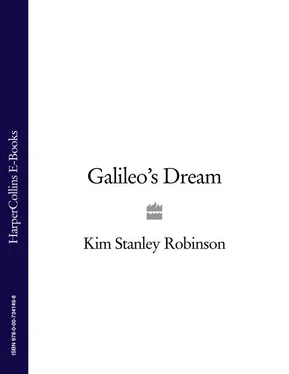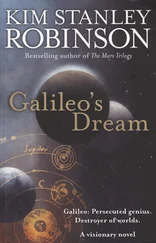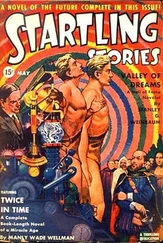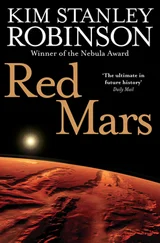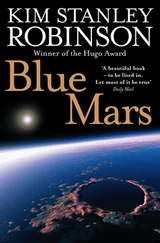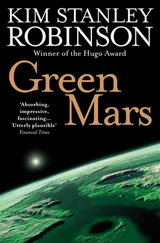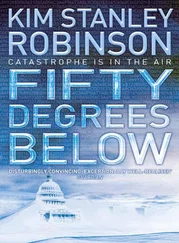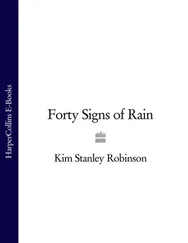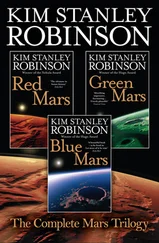‘Any kind of tube will do.’ Here Galileo was as good as Mazzoleni or any artisan-good at seeing what mattered, quick to imagine different ways of getting it. ‘It doesn’t have to be lead. We could try a tube of cloth or leather, reinforced to keep it straight. Glue a long tube of leather to slats. Or just use cardboard.’
Mazzoleni frowned, hefting a lens in his hand. It was about the same size as a Venetian florin, say three fingers wide. ‘Would it stay straight enough?’
‘I think so.’
‘Would the inside surface be smooth?’
‘Does it need to be?’
‘I don’t know, does it?’
They stared at each other. Mazzoleni grinned again, his weathered face an entire topography of wrinkles, delta on delta, the white burn mark on his left temple raising that eyebrow in an impish expression. Galileo tousled the man’s hair as he would a child’s. This work they did together was unlike any other human bond he knew, unlike that with mistress or child, colleague or student, friend or confessor-unlike anyone-because they made new things together, they learned new things. Now once again they were on the hunt.
Galileo said, ‘It looks like we’ll want to be able to move one lens back and forth.’
‘You could fix one glass to the tube, and set the other one in a slightly smaller tube that fitted inside the main one, so you could move that one back and forth but keep it aligned vertically. You could rotate it too, if you wanted.’
‘That’s good.’ Galileo would have come to some such arrangement eventually, but Mazzoleni was especially quick concerning things he could see and touch. ‘Can you bang something like that together? By tomorrow morning?’
Mazzoleni cackled. By now it was the middle of the night, the town was quiet. ‘Simple stuff, compared to your damned compass.’
‘Watch what you say. That thing has paid your salary for years.’
‘Yours too!’
Galileo swatted at him. The compass had become a pain, there was no denying it. ‘You have the materials you need?’
‘No. I think we’ll need more lead tubes, and thinner staves than what we’ve got around, and longer, if you want leather tubes. More cardboard too. And you’ll want more lenses.’
‘I’ll send an order to Florence. Meanwhile let’s work with what we’ve got.’
In the days that followed, every moment was given over to the new project. Galileo neglected his collegial obligations, made his boarding students teach each other, ate his meals in the workshop while he worked: nothing mattered but the project. At times like these it became obvious that the workshop was the centre of the house. The maestro was about as irritable as always, but with his attention elsewhere it got a bit easier for the servants.
While the various efforts of manufacture and assemblage and testing went on, Galileo also took time to write his Venetian friends and allies to set the stage for a presentation of the device. Here was where his career up until this point finally helped him in something. Known mostly as an eccentric if ingenious professor of mathematics, broke and frustrated at forty-five, he had also spent twenty years working and playing with many of the leading intellectuals of Venice, including, crucially, his great friend and mentor Fra Paolo Sarpi. Sarpi was not currently running Venice for the Doge, as he was still recovering from wounds suffered in an assault two years before, but he continued to advise both the Doge and the Senate, especially on technical and philosophical matters. He could not have been better positioned to help Galileo now.
So Galileo wrote to him about what he was working on. What he read in Sarpi’s reply startled him, even frightened him. Apparently the stranger from the artisans’ market had gone to others as well. And his news of a successful spyglass, Sarpi wrote, was apparently already widespread in northern Europe. Sarpi himself had heard a rumour of such a thing nine months before, but had not considered it significant enough to tell Galileo about it.
Galileo cursed as he read this. ‘Not significant, my God!’ It was hard to believe; it was so lame it suggested that his old friend had been mentally damaged by the knives that had been stuck in his head during the assault.
Nothing to be done about that now. People in northern Europe, especially the Flemish and Dutch, were already producing little spyglasses. This Dutch stranger, Sarpi wrote, had contacted the Venetian Senate, offering to sell them such a glass for a thousand florins. Sarpi had advised the Senate against the purchase, certain that Galileo could do as well or better in manufacturing any such object.
‘I could if you would have mentioned it to me,’ Galileo muttered.
But he hadn’t, and now news of the device was in the air. It was a phenomenon Galileo had noticed before; improvements at the artisanal level passed from workshop to workshop without scholars or princes knowing anything about them, and so it often happened that suddenly workshops everywhere could all make a smaller gear, or a stronger steel. This time it was a little spyglass. The claim going around was that they enlarged things by about three times.
Quickly Galileo wrote back to Sarpi, asking him to convene a meeting with the Doge and his senators in order to examine a new and improved spyglass that Galileo was inventing. He also asked him to ask the Doge to refuse to entertain any other such offers during that time. Sarpi replied the next day with a note saying he had done as asked, and the requested meeting was set for 21st August. It was now 5th August. Two weeks to make a better glass.
The action in the workshop intensified. Galileo told his frantic students they were on their own, even Count Alessandro Montalban, who had recently moved in to the house to study for his doctoral exams, and was not pleased at being neglected. But Galileo had tutored many sons of the nobility by now, and brusquely he told the young man to study with the others, to lead them, that it would be good for him. Galileo then moved out into the workshop, where he examined very closely the devices they had made already, trying to figure out how to better them.
Understanding what was going on with the doubled lenses was no easy thing. For Galileo, everything physical came down to matters of geometry, and clearly this bending of the light was a geometrical action; but he lacked any laws of refraction, and could not discover them merely by substituting lenses one after the next. There were tangible variables involved, however, that they could subject to the workshop techniques they had already honed in previous pursuits.
So the workshop’s artisans met in the hour after sunrise, some of them servants of the house, others local ancients retired from arsenals, or lads from the neighbourhood; still rubbing the sleep from their eyes, squeezing the bellows to get the fires in the furnaces going, picking up the work they had laid down the night before. They followed Galileo’s routines: they measured things twice, wrote everything down. They worked while breaking their fast. Watched the rainstorms out of the open side of the shed, waiting for the light to get better so they could get back to work. The brick furnace was a bulwark just outside the roof, and they could stand near the back of it and stay warm while the rain came down, although as it was summer the afternoon thunderstorms weren’t so cold. The large central area of the shop was earthen-floored and held several long tables, one of them under the back wall devoted to all their tools. In the dim rain-light they could clean or sharpen tools, put things in order, pick away at the goose carcass from the night before. When the sun came out they returned to the work.
They made so many alterations in every new spyglass, Galileo was not quite sure what change was having what effect; but it was too interesting to slow down and isolate the variables to make sure of things, except when pursuing a crucial point. The epistemology of the hunt was to follow one thing after another, without much of an overall plan. They found that tubes made of cardboard, sometimes reinforced by slats or covered with leather, worked perfectly well; the interiors did not have to be perfectly smooth, although one saw a clearer image if they were painted black. Most important were the lenses. The one next to the eye they called the eyepiece, the one at the far end, the objective. Both concave and convex lens surfaces, if properly ground, constituted sections of spheres, bulging either in or out. Spheres of differing radii gave different curvatures. The radius of the complete sphere that was implied by a lens, Galileo called its focal length, following the lensmakers’ usage. Fairly soon their repeated trials with different lenses revealed that larger magnifications resulted from a long focal length for the convex lens at the far end of the tube, combined with a short focal length for the concave lens of the eyepiece. Grinding the convex lenses was easy enough, although it was important to eliminate small irregularities if possible, as these made for blurred patches. Grinding truly smooth curved depressions into the much smaller concave lenses, however, was harder to do. A small ball set in a rotating steel-milling mechanism that they screwed to one of the work tables served as their grinding tool. To see better they wore spectacles made of lenses ground earlier in the effort.
Читать дальше
